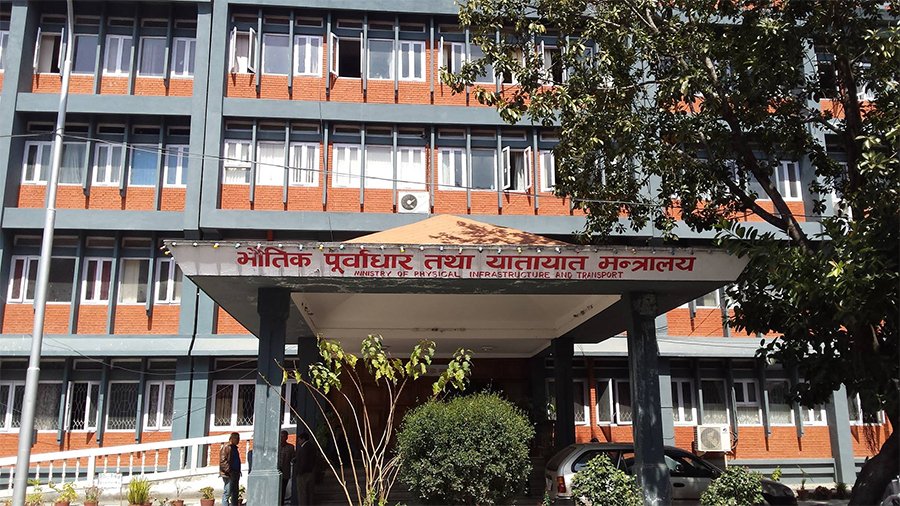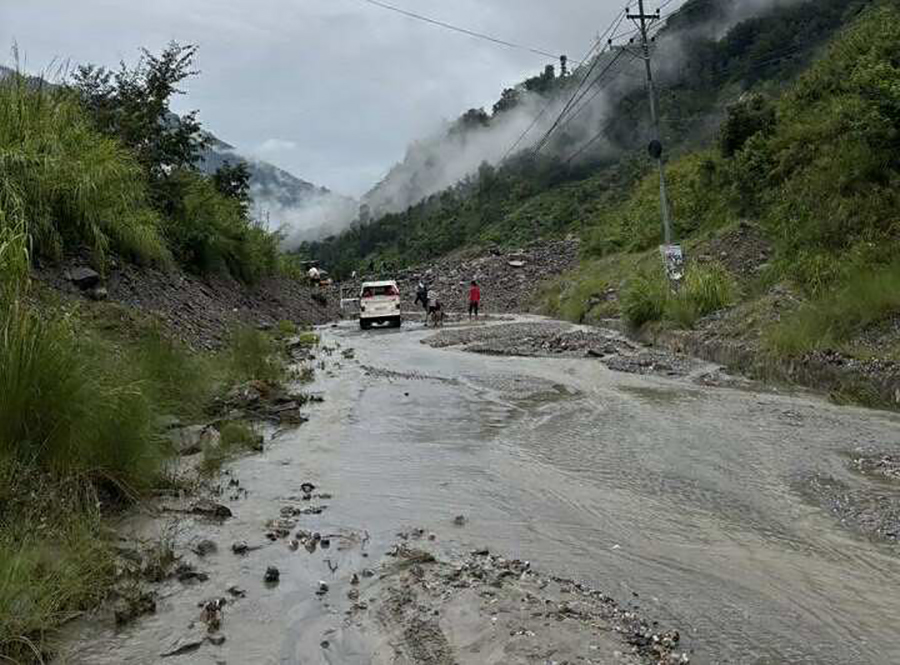
Nepal, like many developing countries, is at a critical crossroads. On one hand, it is pursuing ambitious infrastructure development goals in the areas of hydropower, roads, irrigation, and urban expansion. On the other hand, it faces a growing need to safeguard its fragile environment and rich biodiversity.
Environmental Impact Assessment (EIA), Initial Environmental Examination (IEE) and Brief Environmental Study (BES) are tools designed to bridge this gap—to ensure that economic development does not come at the expense of environmental degradation.
However, in practice, these tools have become ceremonial checkboxes. Their implementation during the construction and post-approval phases of projects is often neglected, resulting in severe ecological and social consequences.
More concerning is that the environmental assessment reports themselves are often of poor quality. A significant number of environmental assessment reports are prepared hastily, sometimes even before site assessments are properly conducted.
These reports are frequently tailored to satisfy the interests of project contractors and proponents rather than reflecting genuine environmental conditions. As a result, many assessments lack scientific rigor, fail to identify real impacts, or propose weak and generic mitigation measures. In many cases, the documents exist simply to obtain legal clearance—not to guide responsible development.
While Nepal has adopted relatively progressive environmental policies and legislation—most notably the Environment Protection Act, 2076 BS and the Environment Protection Rules, 2077 BS. However, the ground reality remains far from ideal. Environmental compliance is frequently undermined by institutional weaknesses, lack of political will, inadequate monitoring, and the marginalisation of environmental professionals within the government machinery.
So, it’s time to delve into the structural issues surrounding EIA compliance in Nepal and proposes actionable solutions for creating a more accountable and sustainable development process.
Understanding the legal framework
The Environment Protection Act (EPA), 2076 BS, provides the legal foundation for environmental governance in Nepal. It mandates that all development projects likely to have significant environmental impacts must undergo an EIA, IEE or BES before obtaining approval. These reports are expected to outline potential environmental and social impacts, suggest mitigation measures, and propose monitoring mechanisms.
Despite the legal robustness, implementation of these assessments remains ineffective. The Act includes provisions for penalties in cases of non-compliance, but such penalties are rarely enforced. Furthermore, the lack of detailed, sector-specific environmental assessment guidelines and a centralized compliance tracking mechanism results in inconsistent monitoring and evaluation.
Even before reaching the implementation phase, the preparation of environmental reports raises major concerns. There are many instances where reports are drafted in coordination with contractors, prioritising fast-track approval over ecological integrity which itself raises questions to environmental professionals too. Impact predictions are often vague, baseline data is often outdated or fabricated, and proposed mitigation measures are generic copy-pastes from previous reports. This compromises the entire environmental assessment process from the beginning.
Institutional challenges in implementation
One of the primary challenges is the fragmented institutional structure. At the federal level, the Ministry of Forests and Environment (MoFE) is the principal agency responsible for environmental governance. However, in most provinces, the environmental unit is placed under the forest’s services, effectively limiting its scope and autonomy. Local governments, too, often treat environmental responsibilities as secondary or club them under miscellaneous services.
This structural marginalisation creates a hierarchy where forestry-related issues receive disproportionate attention, while broader environmental concerns such as air and water pollution, urban waste management, and climate change adaptation are frequently sidelined. As a result, environmental professionals are often left without the authority or resources to carry out meaningful monitoring and enforcement.
Weak monitoring and enforcement mechanisms
Effective monitoring is the backbone of any compliance regime. In Nepal, however, environmental monitoring during the construction phase is either weak or entirely absent. Project developers often treat environmental assessment documents as one-time formalities to secure approval, not as living documents to be implemented and updated.
Government agencies tasked with monitoring often suffer from inadequate staffing, limited budgets, and lack of technical expertise. Additionally, there is no standardised format for periodic compliance reporting, and follow-up inspections are rare. Even when violations are identified, the process of imposing penalties is slow and complicated, reducing the deterrent effect of legal provisions.
Marginalisation of environmental professionals
Environmental officers and professionals are critical for ensuring compliance with environmental regulations. However, their role is often symbolic rather than functional. In many cases, environmental officers are appointed, by the contractor, late in the project cycle, sometimes only after pressure from donor agencies. They are frequently excluded from decision-making processes and are not given the authority to halt non-compliant activities.
“You are here just for formality. Don’t make it difficult”, the contractor whispered before the site visit even began. Stood on a dusty hillside representing the environment, but feeling more like a silent statue rather than an officer”, experience shared by one of the environments professional. Such is the reality for many environmental professionals who are tasked with ensuring that development projects comply with environmental assessment reports.
Moreover, there is no dedicated Environmental Service Track in the Public Service Commission (PSC) of Nepal. Environmental professionals are recruited under miscellaneous services, leading to unclear career progression and limited recognition. This lack of institutional support demotivates professionals and discourages talented graduates from entering or remaining in the public environmental sector.
Donor and contractor dynamics
Many large-scale infrastructure projects in Nepal are funded by international donors or executed in collaboration with international contractors. While donors often mandate environmental safeguards, there is a prevailing tendency to prioritise timely implementation and financial disbursement over genuine compliance.
Contractors, focused on meeting deadlines and minimising costs, often view environmental safeguards as obstacles. Environmental mitigation measures such as dust suppression, slope stabilisation, and biodiversity conservation are either postponed or implemented poorly.
Moreover, compliance reports submitted to donors are sometimes overly optimistic, failing to reflect ground realities. This culture of “reporting for approval” undermines the very purpose of environmental assessment and weakens institutional credibility.
Lack of community engagement
Local communities are the most directly affected by environmental non-compliance, yet they are rarely involved in monitoring and evaluation. Although the assessment process includes a public consultation phase, this is often limited to formal meetings that lack genuine dialogue. After project approval, communities are generally kept out of the compliance loop.
Empowering communities with the tools and knowledge to monitor environmental impacts can significantly enhance accountability. However, this requires institutional commitment, capacity building, and the political will to accept community feedback as a legitimate part of the monitoring process.
The box-ticking culture
A fundamental issue that underpins all these challenges is the “box-ticking” culture. Environmental assessments reports are often reduced to bureaucratic hurdles rather than being seen as strategic tools for sustainable development. Project proponents focus on getting the necessary approvals with minimal resistance, and government officials often prioritise form over substance.
This culture is reinforced by a lack of performance-linked incentives and the absence of consequences for poor compliance. Environmental compliance should be tied to project milestones, funding disbursements, and contractor evaluations, but currently, there is little linkage between paper promises and on-ground performance.
Recommendations for reform
To address these challenges and restore credibility to the environmental assessment process, a multi-pronged approach is needed.
Establish a dedicated environmental civil service: The Public Service Commission should create a separate Environmental Officer cadre with clear career paths, promotion opportunities, and sectoral leadership roles.
Strengthen monitoring and enforcement: Develop a centralised compliance monitoring system with real-time data collection, standardised reporting formats, and automated alerts for non-compliance. Increase staffing and budgets for provincial and local environmental units.
Institutional restructuring: Environmental units should be independent of forest departments and report directly to a dedicated environmental authority at all levels of government.
Mandate independent third-party audits: For large and sensitive projects, independent environmental audits should be mandatory at regular intervals. These audits must be publicly available and reviewed by a national environmental council.
Enhance community participation: Institutionalise community-based monitoring mechanisms by training local user groups, providing digital reporting tools, and establishing grievance redress platforms.
Align donor requirements with national laws: Donor agencies should be required to respect national environmental regulations and support local capacity building. Compliance should be a condition for continued funding.
Link compliance to project financing: Release of project funds should be tied to verified implementation of environmental mitigation measures. Poor compliance should result in financial penalties or suspension of work.
Capacity building and training: Continuous training programs should be organised for environmental officers, contractors, and local officials to improve understanding of compliance requirements and environmental ethics.
Nepal has a strong foundation of environmental legislation and an educated cadre of environmental professionals. However, the current system fails to translate policy into practice. Environmental compliance during project implementation remains weak due to structural imbalances, institutional neglect, and a culture that prioritises approvals over action.
Even before implementation begins, the quality and intent of environmental assessment reports are often compromised. Until these reports are prepared with scientific integrity, free from the undue influence of project proponents, real progress is unlikely.
If Nepal truly aspires to achieve sustainable development, it must empower its environmental institutions, elevate the status of environmental professionals, and foster a culture of accountability. Only then can EIA and IEE reports evolve from ceremonial documents into powerful instruments of change. The time to act is now, before the cumulative impacts of unchecked development become irreversible.
















